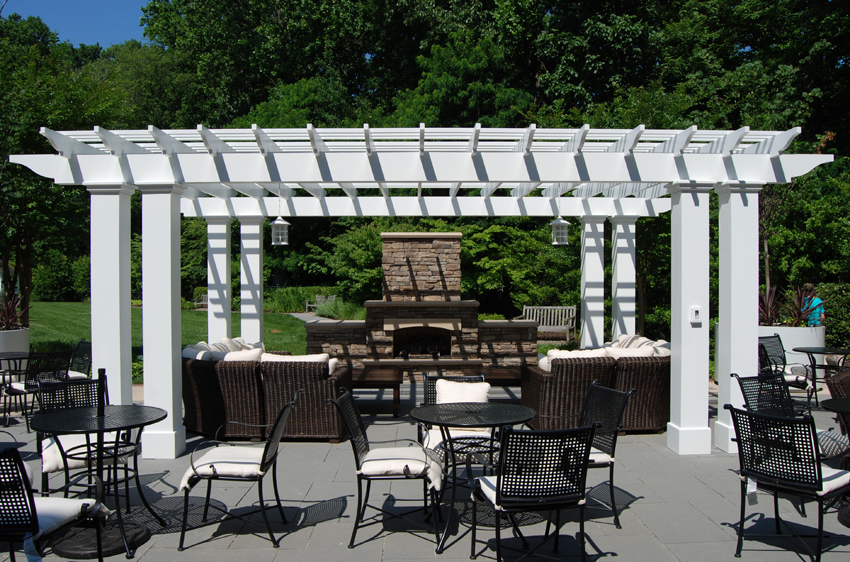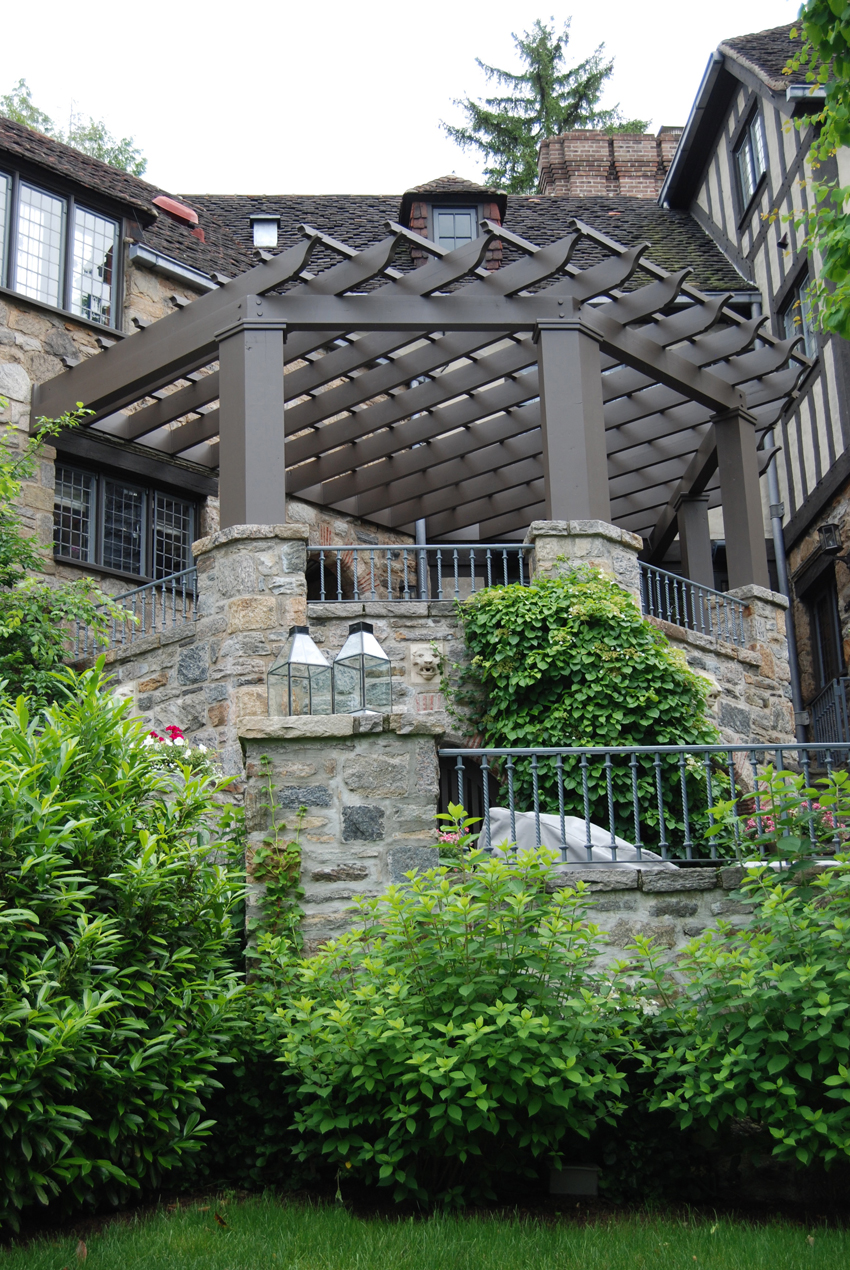Pergolas: The Perfect Complement to Any Outdoor Room
Learning Objectives:
- Identify the current trends driving the increased popularity of outdoor rooms in residential and nonresidential applications, particularly pergolas.
- Evaluate the pros and cons of wood, aluminum, fiberglass, and solid cellular vinyl for pergolas.
- Discuss pergola design options, including attached versus detached, pergola placement, massing and proportion, and beam spacing.
- Review a variety of noteworthy solid cellular vinyl pergola design and installation projects as presented in case studies.
Credits:
This course is approved as a Structured Course
This course can be self-reported to the AANB, as per their CE Guidelines
Approved for structured learning
Approved for Core Learning
This course can be self-reported to the NLAA
Course may qualify for Learning Hours with NWTAA
Course eligible for OAA Learning Hours
This course is approved as a core course
This course can be self-reported for Learning Units to the Architectural Institute of British Columbia
Highly desirable features in homes, mixed-use properties, corporate and educational campuses, public grounds, and more, outdoor dwellings continue to grow in popularity.
In 2018, U.S. consumers spent $25 billion on outdoor living, according to the Cleveland-based market research firm The Freedonia Group. Additionally, the National Association of Home Builders’ most recent “What Homeowners Really Want” survey found that the percentage of homeowners rating a patio as essential or desirable increased from 73 percent to 87 percent over the past 15 years.

All photos courtesy of Walpole Outdoors
Crafted in solid cellular vinyl with columns, beams, and curved end cuts, this 12-foot x 25-foot pergola is an outdoor gathering spot at a 55-plus community in Maryland.
“Outdoor living spaces, rooms, and areas are extremely valuable and important to both homeowners and commercial properties alike,” confirms Joshua Gillow, owner, MasterPLAN Outdoor Living, Brodheadsville, Pennsylvania. “In just the past 20 years, outdoor living has transformed from something we might want to something we simply must have.”
As part of a larger sustainability and health and wellness trend that is largely shaping today’s architectural designs, homeowners and organizations are embracing outdoor spaces as natural extensions of the built environment. This trend recognizes the deep affinity humans have for natural environments. Whether as employees on break, multifamily owners and tenants socializing, or friends meeting for a cup of coffee, people look for sunlight and comfortable, open spaces.
Describing outdoor living spaces as perfect places to enjoy the many sensory pleasures of nature like daylight, fresh air, breezes, smells, and birds chirping, Mark DuBois, AIA, LEED AP, NCARB, owner, Studio DuBois, New York City, says these designs can contribute to people’s physical and emotional well-being.
“Getting outside provides a break from the glow of our computer monitors and flat-screen TVs, and the sun offers welcome relief from the fluorescent and LED lighting we bathe in most of the time,” agrees Joshua Zinder, AIA, NCARB, LEED AP, managing partner, JZA+D, Princeton, New Jersey. “Outdoor dining and exterior rooms and collaboration spaces will continue to be in high demand.”
“The benefits of being outside for recreation, meetings, dining, and all other aspects of life are unmeasurable,” adds Dan Berger with the design-build landscaping company Land Plan in Pleasanton, California.
And now that COVID-19 restrictions are largely limiting movement, the value of outdoor rooms has taken on all new meaning. “There is a tremendous amount of research on the physical and emotional health benefits of being out in nature,” states Sarah Carrier, Ph.D., associate professor of science education, North Carolina State University in Raleigh-Durham. “Simply being outside helps relieve stress, and this is something we can all use right now.”
As an important strategy for boosting employee morale and well-being, appealing outdoor areas are contributing to recruitment and retention. For condominiums, outdoor rooms are a great marketing tool for developers looking to stand out amongst the competition as residents seek properties with outdoor kitchens, barbecue pits, large flat-screen TVs, fireplaces, etc.
Daniel Lobitz, partner, Robert A.M. Stern Architects, New York, looks to create a variety of private and shared outdoor spaces. “People long for fresh air and perhaps even more so in a time of pandemic,” he says. “In conceiving a full program of outdoor spaces of various scales and proportions, we try to provide some areas that are covered and can be used in inclement weather, and other spaces that are open to the sky, such as pergolas that offer moderate enclosure, a sense of privacy, and some shade while also allowing sunlight to peek through.”
For homeowners, developed backyard spaces increase property value and create greater livable space without adding on to the home’s square footage from a building department/taxable perspective.
Another driver boosting outdoor amenities and designs is social media, suggests Duane Draughon, VizX Design Studios, Lisle, Illinois. From Houzz to Instagram to Facebook, individuals are showcasing their unique outdoor designs and experiences to a very interested audience. People often undertake projects inspired by the things they are seeing online and attempt to recreate them in their own backyards.

A radius solid cellular vinyl pergola measuring more than 60 feet long with 10 10-inch round tapered columns and heavy carrying beams is a popular destination for Bank of America employees on break at their Melville, New York, location.
Pergolas
While a montage of landscaping products is available to create these outdoor living environments, pergolas in particular play a unique role in optimizing these spaces.
Of the thousands of projects that Berger has worked on in his 40-plus-year career, the majority have incorporated pergolas.
In fact, the “2017 U.S. Houzz Landscape Trends Study” reported that of 86 percent of homeowners who did work on the structural elements in their outdoor areas, 24 percent updated their gazebos or pergolas.
“Pergolas are enormously appealing because they create the ‘walls’ and ‘ceiling’ of outdoor rooms,” DuBois explains. “They give us some of the protection and shelter that we expect from indoor spaces—the sense that we are in a safe, well-defined place—while allowing us to experience all the delights of being outdoors.”
Originating all the way back to the times of Ancient Egypt, China, Rome, and Greece, pergolas were traditionally used for shelter and aesthetics, and for growing grape vines. The structure gained more prominence during the Italian Renaissance in the 17th century and earned its Latin name “pergula,” which means “projecting eave.” Alison Terry, a Fullerton, California-based landscape architect, explains that at that time, the pergolas were used as covered walkways for resting in the shade when walking through the gardens that were cultivated all over the country. “The traditional sense of a pergola is a linear overhead structure directing you from one space to another space,” she says.
“It was a perfect adaptation for enjoying warmth and sun and air, but with screening from the harshest sun and winds,” Lobitz adds.

Crafted in western red cedar, this residential polygon-shaped pergola serves as an outdoor dining and entertaining area.
Today, Gillow describes pergolas as wonderful structures to incorporate into any outdoor living space, providing comfortable, dappled shade and acting as an aesthetic focal point from any angle. “When properly designed and incorporated into an outdoor space, pergolas enhance the surrounding architecture, further giving the living area a sense of depth,” he says.
Because it can be challenging to provide trees on multiunit properties, pergolas are a great way to incorporate shade in these outdoor areas. Noting some other features, Leigh Lichtenberg, project manager, NAK Design Strategies, Toronto, says pergolas can create human scale in spaces; they can be used as a strategic design element to highlight, view, or create feature areas; and they can help protect against rain and mitigate wind challenges on higher levels.
Pergolas can have four posts, be cantilevered, or attached to a building. They can be solid or slatted, incorporate a fabric, and are commonly designed in numerous styles from Victorian to craftsman to contemporary.
For example, “modern-style pergolas do not incorporate overhanging rafters and purlins, and the edges are boxed-in to create a clean, finished look,” explains Draughon, whereas, “traditional-style pergolas typically have custom-shaped purlins and rafters that overhang the structure by a foot or so.”

The remote-controlled louvered aluminum roof on this Massachusetts company’s pergola outdoor meeting room provides both variable shading and light and protection from inclement weather.
“The function of these structures is equally limitless,” adds Berger. “I have used them for outdoor kitchens, yoga space, workshops, office space, outdoor game space, and movie nights. Nonresidential uses are usually to shade an assembly area, an entertainment event, shelter a meeting, or define a beverage or dining space.”















